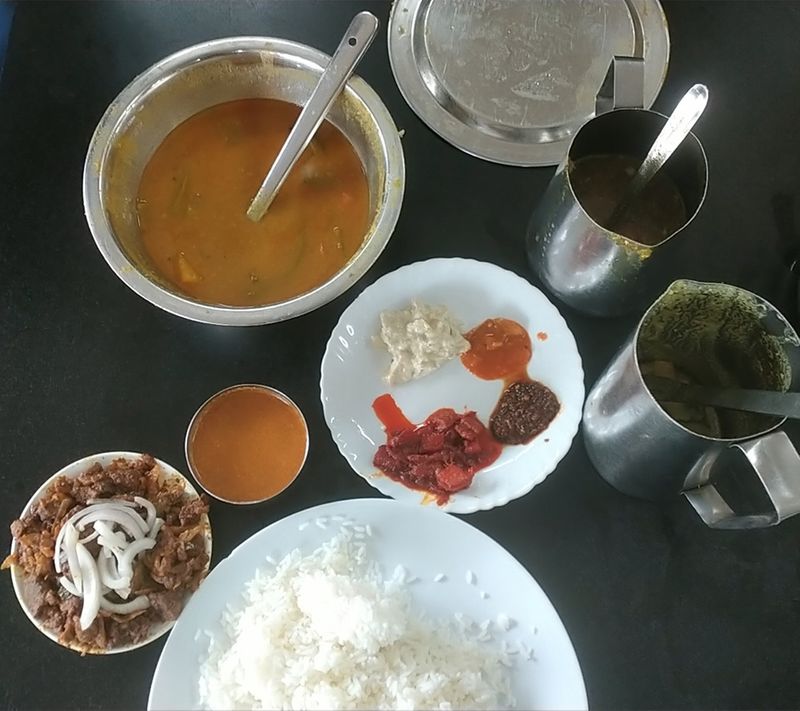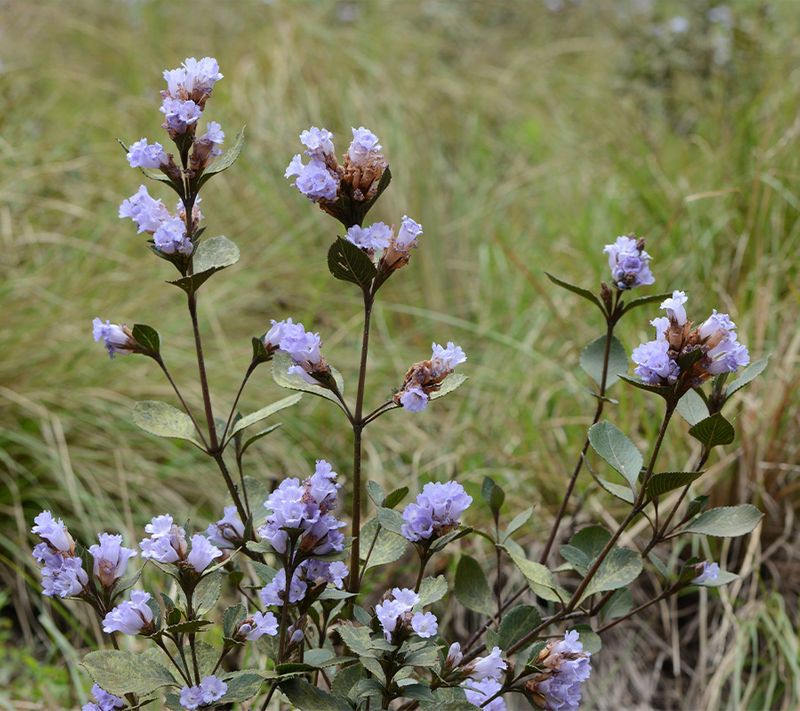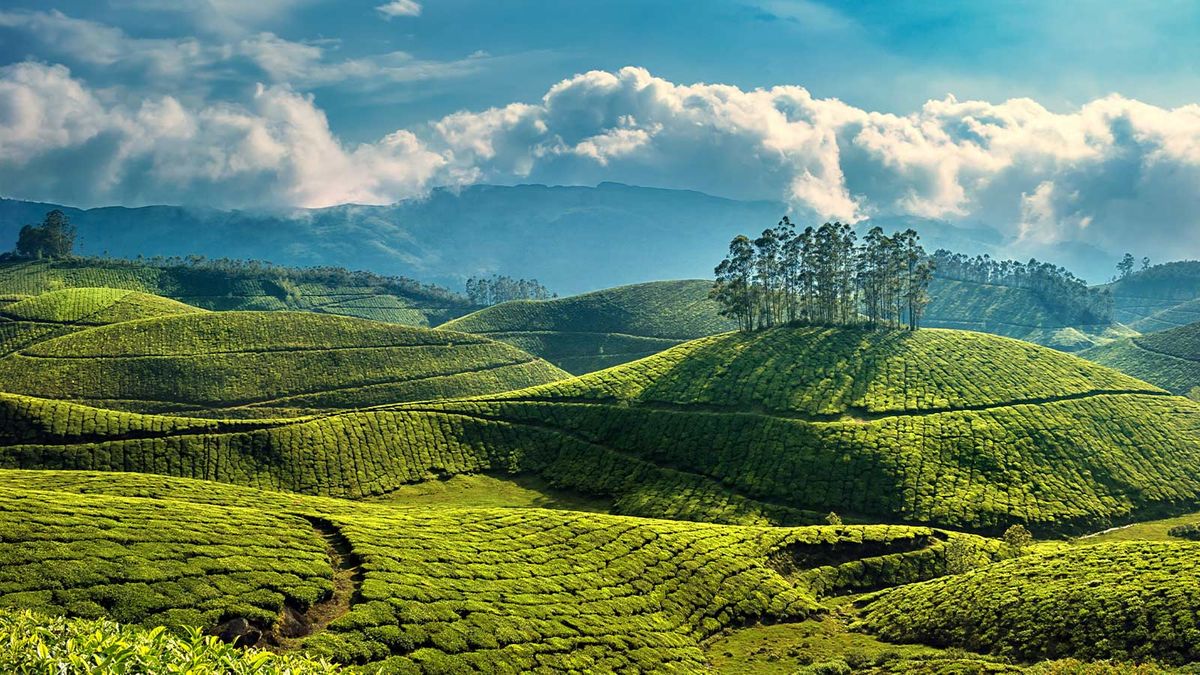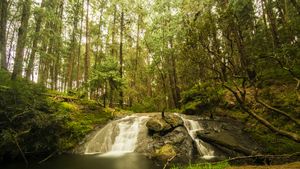Is that chartreuse? Emerald? No, that’s olive! Or perhaps, lime? My mind seems to be keeping my descriptive vocabulary on its toes, forcing me to pick from it that exact hue of green I can’t seem to pinpoint. All this, from what appears to be a surrealist’s colour palette, composed of 500 shades of green, and counting...
I am almost at the end of my four-hour-long car journey from Kochi in the plains below, inching my way towards the promised land above. As a quick weekend getaway from the latest edition of the Kochi Muziris Biennale 2022-2023, the vertiginous town of Munnar, perched high up in Kerala’s mostly Tamil-speaking district of Idukki, is what awaits me.
A town with decidedly colonial underpinnings, what with it once serving the erstwhile British Raj elite as their summer escape. Its magnificent elevation of 1,600 meters above sea level is the perfect foil to the heat and dust below. Both then, and now, too.
Roads to paradise

The perennially winding roads and almost sub-zero degree Celsius December temperature exacerbate my already baffled state of mind. Over the last few hours, I’ve paid special attention to the dramatic topographical changes I see. The vast stretch of the Arabian Sea has given way to the mist-shrouded Western Ghats. Cool glugs of coconut water are now replaced by warming sips of hot, black and cloyingly sweet tea. Just the way I like it.
I am in South India’s tea country after all. With the aforementioned green of the myriad tea plantation, I encounter en route. Each adds to the fecundity and beauty of the rolling hills. And then, there are the sounds. Birdsong intermingling with the pealing of the many bells I hear emanating from stunning temples and imposing churches.
Falling for it!
Competing with all this is the thunderous gushing sound of the water that tumbles forth from the many waterfalls I spot as we enter Munnar Town proper. Each cascading marvel serving as an aquatic sentinel. Welcoming travellers with their jaw-dropping, raw beauty.

I stop for a photo op and a quick idli-sambhar tiffin at Cheeyappara Falls, the grandest of them all and the very first waterfall you will come across on the Kochi–Munnar highway. The mighty, 300-metre cascade splashes its way downward, over a rocky cliff at the bottom. It is from here that one can take in its grandeur by sitting along a small viewing platform. Wiping away the thin layer of mist that coats everything on such freezing cold winter mornings. Expensive camera gear included!
My chatty driver Saju tells me that his favourite, however, is the nearby Valara Falls. The fall’s source is from the Western Ghats in Munnar and originates from the Deviyar River. Here is where I am given an interesting little morsel of trivia. Apparently, the name ‘Munnar’ is believed to mean ‘three rivers’. Thus, referring to its location at the confluence of the Mudhirapuzha, Nallathanni and Kundali rivers.
Down to the tea

One of the first things that I notice as I saunter into Munnar’s old town is how clean it is. This becomes even more apparent as I come face-to-face with the wire mesh sculpture of an elephant in the town center. I find it sitting in a traffic island, next to the obligatory ‘I Love Munnar’ sign that I see in almost every city and town I visit these days. The pachyderm is made with recycled PET bottles left behind by tourists. Serving as a reminder of the fact that I’m in both a tourist-heavy town and one where nature abounds.

After a soul-satisfying, spicy beef thali lunch at a local ‘hotel’, as restaurants are called here, my love for a nice cuppa takes me on a quest for all things tea. I make my first stop at the Kolukkumalai Tea Estate. As one of the highest tea plantations in the world, it is situated at an elevation of 7,900 feet. For a nominal fee of Rs 75, I get a tour of the factory on-site which is renowned worldwide for its flavoured tea leaves. The century-old tea factory is also an interesting place to understand the traditional methods of tea production.
Back in the main town, I further enhance my budding knowledge of tea at the Tata Tea Museum (Rs 75 per person). Here, I am introduced to rare exhibits like the traditional tea roller known as ‘Rotorvane’ used for processing CTC tea, the power-generating ‘Pelton Wheel’ and the Kundale Valley Light Railway Engine that once transported the finished tea. The museum also offers a hands-on experience of plucking tea leaves and tasting different types of tea at the attached cafe.
Truly the G.O.AT.

Having had my fair share of both the main Munnar Old Town and the various photo op vantage points along the verdant tea plantations, it is time to venture a bit farther outside the town limits. Towards the direction of Coimbatore, to be more precise. So, I hop into a local taxi (Rs 300) and find myself at the gates of the Eravikulam National Park a good 30-45 minutes later.
Also known as the Rajamalai Tour, I embark on a minibus ‘safari’ into the national park after buying a ticket for Rs 200. I am here to see the endangered Nilgiri tahr mountain goats in their natural habitat.

In the past, the area of distribution of the rather gentle and docile Nilgiri tahr extended to the high hills of Tamil Nadu in the east, to the South-Western hills of Karnataka in the north and to the Wayanad plateau in the west. Today, this area has shrunk to around 400 km. And currently, the Eravikulam National Park is one of the few locations which have a population of more than 300 individuals.

But the park holds one more source of attraction. This time, for the amateur botanist in me. For, it is also the best place to know more about the ‘neela kurinji’, an indigenous flower that blooms once every 12 years. Unfortunately, the flowers aren’t in bloom this year, so I have to make do with reading about the flower at the very well-maintained information center. But yes, I make a mental note to be here when it blooms next. Only catch — I’ll have to wait till 2031 for that!
Where to stay |




